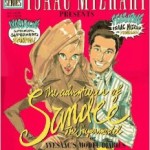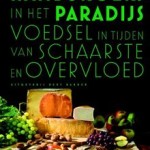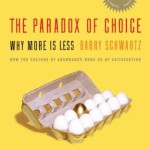John Ronald Reuel Tolkien (3 January 1892 – 2 September 1973) was an English writer, poet,philologist, and university professor, best known as the author of the classic high fantasy works The Hobbit, The Lord of the Rings, and The Silmarillion.
He served as the Rawlinson and Bosworth Professor of Anglo-Saxon and Fellow of Pembroke College, Oxford, from 1925 to 1945 and Merton Professor of English Language and Literature and Fellow of Merton College, Oxford from 1945 to 1959. He was at one time a close friend of C. S. Lewis—they were both members of the informal literary discussion group known as the Inklings. Tolkien was appointed a Commander of the Order of the British Empire by Queen Elizabeth II on 28 March 1972.
After Tolkien’s death, his son Christopher published a series of works based on his father’s extensive notes and unpublished manuscripts, including The Silmarillion. These, together with The Hobbit and The Lord of the Rings form a connected body of tales, poems, fictional histories, invented languages, and literary essays about a fantasy world called Arda, and Middle-earth within it. Between 1951 and 1955, Tolkien applied the term legendarium to the larger part of these writings. While many other authors had published works of fantasy before Tolkien, the great success of The Hobbit and The Lord of the Rings led directly to a popular resurgence of the genre. This has caused Tolkien to be popularly identified as the “father” of modern fantasy literature—or, more precisely, of high fantasy.
In 2008, The Times ranked him sixth on a list of “The 50 greatest British writers since 1945”. Forbes ranked him the 5th top-earning “dead celebrity” in 2009.
“I wish it need not have happened in my time,” said Frodo.
“So do I,” said Gandalf, “and so do all who live to see such times. But that is not for them to decide. All we have to decide is what to do with the time that is given us.”
Biography
Family origins
Most of Tolkien’s paternal ancestors were craftsmen. The Tolkien family had its roots in Lower Saxony but had been living in England since the 18th century, becoming “quickly intensely English”. Tolkien derived his surname from the German word tollkühn, meaning “foolhardy”. Several families with the surname Tolkien or other spelling variants live in northwestern Germany, mainly in Lower Saxony and Hamburg. A German writer has suggested that the name is more likely to derive from the village Tolkynen, near Rastenburg, East Prussia (now in north-eastern Poland), although that village is far from Lower Saxony; its name is derived from the now-extinct Old Prussian language.
Childhood
John Ronald Reuel Tolkien was born on 3 January 1892 in Bloemfontein in the Orange Free State (now Free State Province in South Africa) to Arthur Reuel Tolkien (1857–1896), an English bank manager, and his wife Mabel, née Suffield (1870–1904). The couple had left England when Arthur was promoted to head the Bloemfontein office of the British bank for which he worked. Tolkien had one sibling, his younger brother, Hilary Arthur Reuel, who was born on 17 February 1894.
As a child, he was bitten by a large baboon spider in the garden, an event some think later echoed in his stories, although Tolkien admitted no actual memory of the event and no special hatred of spiders as an adult. In another incident, a young family servant, who thought Tolkien a beautiful child, took the baby to his kraal to show him off, returning him the next morning.
When he was three, he went to England with his mother and brother on what was intended to be a lengthy family visit. His father, however, died in South Africa of rheumatic fever before he could join them. This left the family without an income, so Tolkien’s mother took him to live with her parents in Kings Heath, Birmingham. Soon after, in 1896, they moved to Sarehole (now in Hall Green), then a Worcestershire village, later annexed to Birmingham. He enjoyed exploring Sarehole Mill and Moseley Bog and the Clent, Lickey and Malvern Hills, which would later inspire scenes in his books, along with Worcestershire towns and villages such as Bromsgrove, Alcester, and Alvechurch and places such as his aunt Jane’s farm of Bag End, the name of which he used in his fiction.
Mabel Tolkien taught her two children at home. Ronald, as he was known in the family, was a keen pupil. She taught him a great deal of botany and awakened in him the enjoyment of the look and feel of plants. Young Tolkien liked to draw landscapes and trees, but his favorite lessons were those concerning languages, and his mother taught him the rudiments of Latin very early.
He could read by the age of four and could write fluently soon afterwards. His mother allowed him to read many books. He disliked Treasure Island and The Pied Piper and thought Alice’s Adventures in Wonderland by Lewis Carroll was “amusing but disturbing”. He liked stories about “Red Indians” and the fantasy works by George MacDonald. In addition, the “Fairy Books” of Andrew Lang were particularly important to him and their influence is apparent in some of his later writings.
Mabel Tolkien was received into the Roman Catholic Church in 1900 despite vehement protests by her Baptist family, which stopped all financial assistance to her. In 1904, when J.R.R. Tolkien was 12, his mother died of acute diabetes at Fern Cottage in Rednal, which she was renting. She was then about 34 years of age, about as old as a person with diabetes mellitus type 1 could live without treatment —insulin would not be discovered until two decades later. Mabel Suffield Tolkien lies buried in St. Peter’s Roman Catholic churchyard, Bromsgrove, Worcestershire. Nine years after her death, Tolkien wrote, “My own dear mother was a martyr indeed, and it is not to everybody that God grants so easy a way to his great gifts as he did to Hilary and myself, giving us a mother who killed herself with labor and trouble to ensure us keeping the faith.”
Prior to her death, Mabel Tolkien had assigned the guardianship of her sons to her close friend, Fr. Francis Xavier Morgan of the Birmingham Oratory, who was assigned to bring them up as good Catholics. In a 1965 letter to his son Michael, Tolkien recalled the influence of his guardian: “[Morgan] was an upper-class Welsh-Spaniard Tory, and seemed to some just a pottering old gossip. He was—and he was not. I first learned charity and forgiveness from him; and in the light of it pierced even the ‘liberal’ darkness out of which I came, knowing more about ‘Bloody Mary’ than the Mother of Jesus—who was never mentioned except as an object of wicked worship by the Romanists.”
After his mother’s death, Tolkien grew up in the Edgbaston area of Birmingham and attended King Edward’s School, Birmingham, and later St. Philip’s School. In 1903, he won a Foundation Scholarship and returned to King Edward’s. While a pupil there, Tolkien was one of the cadets from the school’s Officers Training Corps who helped “line the route” for the 1910 coronation parade of King George V. Like the other cadets from King Edward’s, Tolkien was posted just outside the gates of Buckingham Palace.
In Edgbaston, Tolkien lived there in the shadow of Perrott’s Folly and the Victorian tower of Edgbaston Waterworks, which may have influenced the images of the dark towers within his works. Another strong influence was the romantic medievalist paintings of Edward Burne-Jones and the Pre-Raphaelite Brotherhood; the Birmingham Museum and Art Gallery had a large collection of works on public display.
“I don’t know half of you half as well as I should like; and I like less than half of you half as well as you deserve.”
Youth
While in his early teens, Tolkien had his first encounter with a constructed language, Animalic, an invention of his cousins, Mary and Marjorie Incledon. At that time, he was studying Latin and Anglo-Saxon. Interest in the language soon died away, but Mary and others, including Tolkien himself, invented a new and more complex language called Nevbosh. The next constructed language he came to work with, Naffarin, would be his own creation.
In 1911, while they were at King Edward’s School, Birmingham, Tolkien and three friends, Rob Gilson, Geoffrey Bache Smith and Christopher Wiseman, formed a semi-secret society they called the T.C.B.S. The initials stood for Tea Club and Barrovian Society, alluding to their fondness for drinking tea in Barrow’s Stores near the school and, secretly, in the school library. After leaving school, the members stayed in touch and, in December 1914, they held a “council” in London at Wiseman’s home. For Tolkien, the result of this meeting was a strong dedication to writing poetry.
The 1911 census of England and Wales shows Tolkien (occupation “school”) lodging at 4 Highfield Road, Edgbaston, along with his brother Hilary (occupation “hardware merchant’s clerk”).
In 1911, Tolkien went on a summer holiday in Switzerland, a trip that he recollects vividly in a 1968 letter, noting that Bilbo’s journey across the Misty Mountains (“including the glissade down the slithering stones into the pine woods”) is directly based on his adventures as their party of 12 hiked from Interlaken to Lauterbrunnen and on to camp in themoraines beyond Mürren. Fifty-seven years later, Tolkien remembered his regret at leaving the view of the eternal snows of Jungfrau and Silberhorn (“the Silvertine (Celebdil) of my dreams”). They went across the Kleine Scheidegg to Grindelwald and on across the Grosse Scheidegg to Meiringen. They continued across the Grimsel Pass, through the upper Valais to Brig and on to the Aletsch glacier and Zermatt.
In October of the same year, Tolkien began studying at Exeter College, Oxford. He initially studied Classics but changed his course in 1913 to English Language and Literature, graduating in 1915 with first-class honors in his final examinations.
Courtship and marriage
At the age of 16, J.R.R. Tolkien met Edith Mary Bratt, who was three years his senior, when he and his brother Hilary moved into the boarding house where she lived. According to Humphrey Carpenter:
Edith and Ronald took to frequenting Birmingham tea shops, especially one which had a balcony overlooking the pavement. There they would sit and throw sugar lumps into the hats of passers-by, moving to the next table when the sugar bowl was empty. … With two people of their personalities and in their position, romance was bound to flourish. Both were orphans in need of affection, and they found that they could give it to each other. During the summer of 1909, they decided that they were in love.
His guardian, Father Morgan, viewing Edith as a distraction from Tolkien’s school work and horrified that his young charge was seriously involved with a Protestant girl, prohibited him from meeting, talking to, or even corresponding with her until he was 21. He obeyed this prohibition to the letter, with one notable early exception, over which Father Morgan threatened to cut short his University career if he did not stop.
On the evening of his 21st birthday, Tolkien wrote to Edith. He declared his love and asked her to marry him. Edith replied that she had already agreed to marry another man, but that she had done so because she had believed Tolkien had forgotten her. The two met beneath a railway viaduct and renewed their love. Edith returned her engagement ring and announced that she would marry Tolkien instead. Following their engagement Edith reluctantly announced that she was converting to Catholicism at Tolkien’s insistence. Her landlord, a staunch Protestant, was infuriated and evicted her as soon as she found other lodgings. Edith and Ronald were formally engaged in Birmingham, in January 1913, and married at St. Mary Immaculate Roman Catholic Church, Warwick, on 22 March 1916.
“Not all those who wander are lost.”
First World War
In 1914 the United Kingdom entered the First World War. Tolkien’s relatives were shocked when he elected not to immediately volunteer for the British Army. Instead, Tolkien entered a program wherein he delayed enlisting until completing his degree in July 1915. He was then commissioned as a Second Lieutenant in the Lancashire Fusiliers. He trained with the 13th (Reserve) Battalion on Cannock Chase, Staffordshire, for eleven months. In a letter to Edith, Tolkien complained, “Gentlemen are rare among the superiors, and even human beings rare indeed.”[48] Tolkien was then transferred to the 11th (Service) Battalion with the British Expeditionary Force, arriving in France on 4 June 1916. His departure from England on a troop transport inspired him to write his poem, The Lonely Isle. He later wrote, “Junior officers were being killed off, a dozen a minute. Parting from my wife then … it was like a death.”
After training as a signals officer, Tolkien arrived at the Somme. In between terms behind the lines at Bouzincourt, Tolkien participated in the assaults on the Schwaben Redoubt and the Leipzig Salient. According to the memoirs of the Reverend Mervyn S. Evers, Anglican chaplain to the Lancashire Fusiliers:
On one occasion I spent the night with the Brigade Machine Gun Officer and the Signals Officer in one of the captured German dugouts … We dossed down for the night in the hopes of getting some sleep, but it was not to be. We no sooner lay down than hordes of lice got up. So we went round to the Medical Officer, who was also in the dugout with his equipment, and he gave us some ointment which he assured us would keep the little brutes away. We anointed ourselves all over with the stuff and again lay down in great hopes, but it was not to be, because instead of discouraging them it seemed to act like a kind of hors d’oeuvre and the little beggars went at their feast with renewed vigour.
Tolkien’s time in combat was a terrible stress for Edith, who feared that every knock on the door might carry news of her husband’s death. To get around the British Army’s postal censorship, the Tolkiens developed a secret code for his letters home. By using the code, Edith could track her husband’s movements on a map of the Western Front.
On 27 October 1916, as his battalion attacked Regina Trench, Tolkien came down with trench fever, a disease carried by lice, which were common in the dugouts. Tolkien was invalided to England on 8 November 1916. Many of his dearest school friends were killed in the war. Among their number were Rob Gilson of the T.C.B.S., who was killed on the first day of the Somme while leading his men in the assault on Beaumont Hamel. Fellow T.C.B.S. member Geoffrey Smith was killed during the same battle when a German artillery shell landed on a first aid post. Tolkien’s battalion was almost completely wiped out following Tolkien’s return to England.
Tolkien might well have been killed himself, but he had suffered from health problems and had been removed from combat multiple times.
According to John Garth:
Although Kitchener’s army enshrined old social boundaries, it also chipped away at the class divide by throwing men from all walks of life into a desperate situation together. Tolkien wrote that the experience taught him, ‘a deep sympathy and feeling for the Tommy; especially the plain soldier from the agricultural counties.’ He remained profoundly grateful for the lesson. For a long time, he had been imprisoned in a tower, not of pearl, but of ivory.
In later years, Tolkien indignantly declared that those who searched his works for parallels to the Second World War were entirely mistaken:
One has indeed personally to come under the shadow of war to feel fully its oppression; but as the years go by it seems now often forgotten that to be caught in youth by 1914 was no less hideous an experience than to be involved in 1939 and the following years. By 1918 all but one of my close friends were dead.
“All we have to decide is what to do with the time that is given us.”
Home front
A weak and emaciated Tolkien spent the remainder of the war alternating between hospitals and garrison duties, being deemed medically unfit for general service.
During his recovery in a cottage in Little Haywood, Staffordshire, he began to work on what he called The Book of Lost Tales, beginning with The Fall of Gondolin. Throughout 1917 and 1918 his illness kept recurring, but he had recovered enough to do home service at various camps and was promoted to Lieutenant. It was at this time that Edith bore their first child, John Francis Reuel Tolkien.
When he was stationed at Kingston upon Hull, he and Edith went walking in the woods at nearby Roos, and Edith began to dance for him in a clearing among the flowering hemlock. After his wife’s death in 1971, Tolkien remembered,
I never called Edith Luthien – but she was the source of the story that in time became the chief part of the Silmarillion. It was first conceived in a small woodland glade filled with hemlocks at Roos in Yorkshire (where I was for a brief time in command of an outpost of the Humber Garrison in 1917, and she was able to live with me for a while). In those days her hair was raven, her skin clear, her eyes brighter than you have seen them, and she could sing – and dance. But the story has gone crooked, & I am left, and I cannot plead before the inexorable Mandos.
This incident inspired the account of the meeting of Beren and Lúthien.
“Faithless is he that says farewell when the road darkens.”
Academic and writing career
Tolkien’s first civilian job after World War I was at the Oxford English Dictionary, where he worked mainly on the history and etymology of words of Germanic origin beginning with the letter W. In 1920, he took up a post as Reader in English Language at the University of Leeds, and became the youngest professor there. While at Leeds, he produced A Middle English Vocabulary and a definitive edition of Sir Gawain and the Green Knight with E. V. Gordon, both becoming academic standard works for several decades. He also translated Sir Gawain, Pearl, and Sir Orfeo. In 1925, he returned to Oxford as Rawlinson and Bosworth Professor of Anglo-Saxon, with a fellowship at Pembroke College.
During his time at Pembroke College Tolkien wrote The Hobbit and the first two volumes of The Lord of the Rings, whilst living at 20 Northmoor Road in North Oxford (where a blue plaque was placed in 2002). He also published a philological essay in 1932 on the name “Nodens”, following Sir Mortimer Wheeler’s unearthing of a Roman Asclepeion at Lydney Park, Gloucestershire, in 1928. [From: Wikipedia.com]
War, Lost Tales and Academia
Unlike so many of his contemporaries, Tolkien did not rush to join up immediately on the outbreak of war, but returned to Oxford, where he worked hard and finally achieved a first-class degree in June 1915. At this time he was also working on various poetic attempts, and on his invented languages, especially one that he came to call Qenya [sic], which was heavily influenced by Finnish – but he still felt the lack of a connecting thread to bring his vivid but disparate imaginings together. Tolkien finally enlisted as a second lieutenant in the Lancashire Fusiliers whilst working on ideas of Earendel [sic] the Mariner, who became a star, and his journeyings. For many months Tolkien was kept in boring suspense in England, mainly in Staffordshire. Finally it appeared that he must soon embark for France, and he and Edith married in Warwick on 22 March 1916.
Eventually he was indeed sent to active duty on the Western Front, just in time for the Somme offensive. After four months in and out of the trenches, he succumbed to “trench fever”, a form of typhus-like infection common in the insanitary conditions, and in early November was sent back to England, where he spent the next month in hospital in Birmingham. By Christmas he had recovered sufficiently to stay with Edith at Great Haywood in Staffordshire.
During these last few months, all but one of his close friends of the “T. C. B. S.” had been killed in action. Partly as an act of piety to their memory, but also stirred by reaction against his war experiences, he had already begun to put his stories into shape, “… in huts full of blasphemy and smut, or by candle light in bell-tents, even some down in dugouts under shell fire”. This ordering of his imagination developed into the Book of Lost Tales (not published in his lifetime), in which most of the major stories of the Silmarillion appear in their first form: tales of the Elves and the “Gnomes”, (i. e. Deep Elves, the later Noldor), with their languages Qenya and Goldogrin. Here are found the first recorded versions of the wars against Morgoth, the siege and fall of Gondolin and Nargothrond, and the tales of Túrin and of Beren and Lúthien.
Throughout 1917 and 1918 his illness kept recurring, although periods of remission enabled him to do home service at various camps sufficiently well to be promoted to lieutenant. It was when he was stationed in the Hull area that he and Edith went walking in the woods at nearby Roos, and there in a grove thick with hemlock Edith danced for him. This was the inspiration for the tale of Beren and Lúthien, a recurrent theme in his “Legendarium”. He came to think of Edith as “Lúthien” and himself as “Beren”. Their first son, John Francis Reuel (later Father John Tolkien) had already been born on 16 November 1917.
When the Armistice was signed on 11 November 1918, Tolkien had already been putting out feelers to obtain academic employment, and by the time he was demobilised he had been appointed Assistant Lexicographer on the New English Dictionary (the “Oxford English Dictionary”), then in preparation. While doing the serious philological work involved in this, he also gave one of his Lost Tales its first public airing – he read The Fall of Gondolin to the Exeter College Essay Club, where it was well received by an audience which included Neville Coghill and Hugo Dyson, two future “Inklings”. However, Tolkien did not stay in this job for long. In the summer of 1920 he applied for the quite senior post of Reader (approximately, Associate Professor) in English Language at the University of Leeds, and to his surprise was appointed.
At Leeds as well as teaching he collaborated with E. V. Gordon on the famous edition of Sir Gawain and the Green Knight, and continued writing and refining The Book of Lost Tales and his invented “Elvish” languages. In addition, he and Gordon founded a “Viking Club” for undergraduates devoted mainly to reading Old Norse sagas and drinking beer. It was for this club that he and Gordon originally wrote their Songs for the Philologists, a mixture of traditional songs and original verses translated into Old English, Old Norse and Gothic to fit traditional English tunes. Leeds also saw the birth of two more sons: Michael Hilary Reuel in October 1920, and Christopher Reuel in 1924. Then in 1925 the Rawlinson and Bosworth Professorship of Anglo-Saxon at Oxford fell vacant; Tolkien successfully applied for the post.
“Deserves it! I daresay he does. Many that live deserve death. And some that die deserve life. Can you give it to them? Then do not be too eager to deal out death in judgement. For even the very wise cannot see all ends.”
Professor Tolkien, The Inklings and Hobbits
However, his rare scholarly publications were often extremely influential, most notably his lecture “Beowulf, the Monsters and the Critics”. His seemingly almost throwaway comments have sometimes helped to transform the understanding of a particular field – for example, in his essay on “English and Welsh”, with its explanation of the origins of the term “Welsh” and its references to phonaesthetics (both these pieces are collected in The Monsters and the Critics and Other Essays, currently in print). His academic life was otherwise largely unremarkable. In 1945 he changed his chair to the Merton Professorship of English Language and Literature, which he retained until his retirement in 1959. Apart from all the above, he taught undergraduates, and played an important but unexceptional part in academic politics and administration.In a sense, in returning to Oxford as a Professor, Tolkien had come home. Although he had few illusions about the academic life as a haven of unworldly scholarship (see for example Letters 250), he was nevertheless by temperament a don’s don, and fitted extremely well into the largely male world of teaching, research, the comradely exchange of ideas and occasional publication. In fact, his academic publication record is very sparse, something that would have been frowned upon in these days of quantitative personnel evaluation.
His family life was equally straightforward. Edith bore their last child and only daughter, Priscilla, in 1929. Tolkien got into the habit of writing the children annual illustrated letters as if from Santa Claus, and a selection of these was published in 1976 as The Father Christmas Letters. He also told them numerous bedtime stories, of which more anon. In adulthood John entered the priesthood, Michael and Christopher both saw war service in the Royal Air Force. Afterwards Michael became a schoolmaster and Christopher a university lecturer, and Priscilla became a social worker. They lived quietly in North Oxford, and later Ronald and Edith lived in the suburb of Headington.
However, Tolkien’s social life was far from unremarkable. He soon became one of the founder members of a loose grouping of Oxford friends (by no means all at the University) with similar interests, known as “The Inklings”. The origins of the name were purely facetious – it had to do with writing, and sounded mildly Anglo-Saxon; there was no evidence that members of the group claimed to have an “inkling” of the Divine Nature, as is sometimes suggested. Other prominent members included the above-mentioned Messrs Coghill and Dyson, as well as Owen Barfield, Charles Williams, and above all C. S. Lewis, who became one of Tolkien’s closest friends, and for whose return to Christianity Tolkien was at least partly responsible. The Inklings regularly met for conversation, drink, and frequent reading from their work-in-progress.
“The world is indeed full of peril, and in it there are many dark places; but still there is much that is fair, and though in all lands love is now mingled with grief, it grows perhaps the greater.”
The Storyteller
Meanwhile Tolkien continued developing his mythology and languages. As mentioned above, he told his children stories, some of which he developed into those published posthumously as Mr. Bliss, Roverandom, etc. However, according to his own account, one day when he was engaged in the soul-destroying task of marking examination papers, he discovered that one candidate had left one page of an answer-book blank. On this page, moved by who knows what anarchic daemon, he wrote “In a hole in the ground there lived a hobbit“.
In typica
l Tolkien fashion, he then decided he needed to find out what a Hobbit was, what sort of a hole it lived in, why it lived in a hole, etc. From this investigation grew a tale that he told to his younger children, and even passed round. In 1936 an incomplete typescript of it came into the hands of Susan Dagnall, an employee of the publishing firm of George Allen and Unwin (merged in 1990 with HarperCollins).She asked Tolkien to finish it, and presented the complete story to Stanley Unwin, the then Chairman of the firm. He tried it out on his 10-year old son Rayner, who wrote an approving report, and it was published as The Hobbit in 1937. It immediately scored a success, and has not been out of children’s recommended reading lists ever since. It was so successful that Stanley Unwin asked if he had any more similar material available for publication.
By this time Tolkien had begun to make his Legendarium into what he believed to be a more presentable state, and as he later noted, hints of it had already made their way into The Hobbit. He was now calling the full account Quenta Silmarillion, or Silmarillion for short. He presented some of his “completed” tales to Unwin, who sent them to his reader. The reader’s reaction was mixed: dislike of the poetry and praise for the prose (the material was the story of Beren and Lúthien) but the overall decision at the time was that these were not commercially publishable. Unwin tactfully relayed this message to Tolkien, but asked him again if he was willing to write a sequel to The Hobbit. Tolkien was disappointed at the apparent failure of The Silmarillion, but agreed to take up the challenge of “The New Hobbit”.
This soon developed into something much more than a children’s story; for the highly complex 16-year history of what became The Lord of the Rings consult the works listed below. Suffice it to say that the now adult Rayner Unwin was deeply involved in the later stages of this opus, dealing magnificently with a dilatory and temperamental author who, at one stage, was offering the whole work to a commercial rival (which rapidly backed off when the scale and nature of the package became apparent). It is thanks to Rayner Unwin’s advocacy that we owe the fact that this book was published at all – Andave laituvalmes! His father’s firm decided to incur the probable loss of £1,000 for the succès d’estime, and publish it under the title of The Lord of the Rings in three parts during 1954 and 1955, with USA rights going to Houghton Mifflin. It soon became apparent that both author and publishers had greatly underestimated the work’s public appeal.
“If more of us valued food and cheer and song above hoarded gold, it would be a merrier world.”
The “Cult”
The really amazing moment was when The Lord of the Rings went into a pirated paperback version in 1965. Firstly, this put the book into the impulse-buying category; and secondly, the publicity generated by the copyright dispute alerted millions of American readers to the existence of something outside their previous experience, but which appeared to speak to their condition. By 1968 The Lord of the Rings had almost become the Bible of the “Alternative Society”.The Lord of the Rings rapidly came to public notice. It had mixed reviews, ranging from the ecstatic (W. H. Auden, C. S. Lewis) to the damning (E. Wilson, E. Muir, P. Toynbee) and just about everything in between. The BBC put on a drastically condensed radio adaptation in 12 episodes on the Third Programme. In 1956 radio was still a dominant medium in Britain, and the Third Programme was the “intellectual” channel. So far from losing money, sales so exceeded the break-even point as to make Tolkien regret that he had not taken early retirement. However, this was still based only upon hardback sales.
This development produced mixed feelings in the author. On the one hand, he was extremely flattered, and to his amazement, became rather rich. On the other, he could only deplore those whose idea of a great trip was to ingest The Lord of the Rings and LSD simultaneously. Arthur C. Clarke and Stanley Kubrick had similar experiences with 2001: A Space Odyssey. Fans were causing increasing problems; both those who came to gawp at his house and those, especially from California who telephoned at 7 p.m. (their time – 3 a.m. his), to demand to know whether Frodo had succeeded or failed in the Quest, what was the preterite of Quenyan lanta-, or whether or not Balrogs had wings. So he changed addresses, his telephone number went ex-directory, and eventually he and Edith moved to Bournemouth, a pleasant but uninspiring South Coast resort (Hardy’s “Sandbourne”), noted for the number of its elderly well-to-do residents.
Meanwhile the cult, not just of Tolkien, but of the fantasy literature that he had revived, if not actually inspired (to his dismay), was really taking off – but that is another story, to be told in another place.
“There is some good in this world, and it’s worth fighting for.”
Other Writings
Despite all the fuss over The Lord of the Rings, between 1925 and his death Tolkien did write and publish a number of other articles, including a range of scholarly essays, many reprinted in The Monsters and the Critics and Other Essays; one Middle-earth related work, The Adventures of Tom Bombadil; editions and translations of Middle English works such as the Ancrene Wisse, Sir Gawain, Sir Orfeo and The Pearl, and some stories independent of the Legendarium, such as the Imram, The Homecoming of Beorhtnoth Beorhthelm’s Son, The Lay of Aotrou and Itroun – and, especially,Farmer Giles of Ham, Leaf by Niggle, and Smith of Wootton Major.
The flow of publications was only temporarily slowed by Tolkien’s death. The long-awaited Silmarillion, edited by Christopher Tolkien, appeared in 1977. In 1980 Christopher also published a selection of his father’s incomplete writings from his later years under the title of Unfinished Tales of Númenor and Middle-earth. In the introduction to this work Christopher Tolkien referred in passing to The Book of Lost Tales, “itself a very substantial work, of the utmost interest to one concerned with the origins of Middle-earth, but requiring to be presented in a lengthy and complex study, if at all” (Unfinished Tales, p. 6, paragraph 1).
The sales of The Silmarillion had rather taken George Allen & Unwin by surprise, and those of Unfinished Tales even more so. Obviously, there was a market even for this relatively abstruse material and they decided to risk embarking on this “lengthy and complex study”. Even more lengthy and complex than expected, the resulting 12 volumes of the History of Middle-earth, under Christopher’s editorship, proved to be a successful enterprise. (Tolkien’s publishers had changed hands, and names, several times between the start of the enterprise in 1983 and the appearance of the paperback edition of Volume 12, The Peoples of Middle-earth, in 1997.)
“I will not say, do not weep, for not all tears are an evil.”
Death
After his retirement in 1959 Edith and Ronald moved to Bournemouth. On 22 November 1971 Edith died, and Ronald soon returned to Oxford, to rooms provided by Merton College. Ronald died on 2 September 1973. He and Edith are buried together in a single grave in the Catholic section of Wolvercote cemetery in the northern suburbs of Oxford. (The grave is well signposted from the entrance.) The legend on the headstone reads:
John Ronald Reuel Tolkien, Beren, 1892-1973
[From: Tolkiensociety.org]
Now Watch These Videos:
If you like this story, CLICK HERE to join the tribe of success-minded people just like you. You will love our weekly quick summaries of top stories, talks, books, movies, music and more with handy downloadable guides, cheat sheets, cliffs notes and quote books.

























